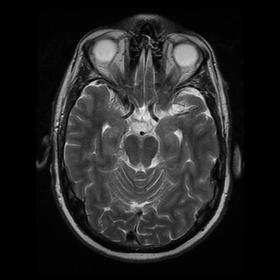- Home
- About Us
- TSPT Academy
- Online Courses
-
Resources
- Newsletter
- Business Minded Sports Physio Podcast
- Day in the Life of a Sports PT
- Residency Corner
-
Special Tests
>
-
Cervical Spine
>
- Alar Ligament Test
- Bakody's Sign
- Cervical Distraction Test
- Cervical Rotation Lateral Flexion Test
- Craniocervical Flexion Test (CCFT)
- Deep Neck Flexor Endurance Test
- Posterior-Anterior Segmental Mobility
- Segmental Mobility
- Sharp-Purser Test
- Spurling's Maneuver
- Transverse Ligament Test
- ULNT - Median
- ULNT - Radial
- ULNT - Ulnar
- Vertebral Artery Test
- Thoracic Spine >
-
Lumbar Spine/Sacroiliac Joint
>
- Active Sit-Up Test
- Alternate Gillet Test
- Crossed Straight Leg Raise Test
- Extensor Endurance Test
- FABER Test
- Fortin's Sign
- Gaenslen Test
- Gillet Test
- Gower's Sign
- Lumbar Quadrant Test
- POSH Test
- Posteroanterior Mobility
- Prone Knee Bend Test
- Prone Instability Test
- Resisted Abduction Test
- Sacral Clearing Test
- Seated Forward Flexion Test
- SIJ Compression/Distraction Test
- Slump Test
- Sphinx Test
- Spine Rotators & Multifidus Test
- Squish Test
- Standing Forward Flexion Test
- Straight Leg Raise Test
- Supine to Long Sit Test
-
Shoulder
>
- Active Compression Test
- Anterior Apprehension
- Biceps Load Test II
- Drop Arm Sign
- External Rotation Lag Sign
- Hawkins-Kennedy Impingement Sign
- Horizontal Adduction Test
- Internal Rotation Lag Sign
- Jobe Test
- Ludington's Test
- Neer Test
- Painful Arc Sign
- Pronated Load Test
- Resisted Supination External Rotation Test
- Speed's Test
- Posterior Apprehension
- Sulcus Sign
- Thoracic Outlet Tests >
- Yergason's Test
- Elbow >
- Wrist/Hand >
- Hip >
- Knee >
- Foot/Ankle >
-
Cervical Spine
>
- I want Financial Freedom
- I want Professional Growth
- I want Clinical Mastery
|
Have you ever seen or had a patient that has been doing exercises (maybe even ones that you've prescribed) for some specific muscles, but they continue to test weak, despite weeks or months of doing the exercises? It doesn't make sense. A weak muscle should respond to exercise right? What should you do at this point? There are 3 possible answers that I want to go over, in no specific order. First, and perhaps most obvious, the patient may not be loading or performing the exercise properly. For example, if the patient is performing a clamshell, but instead of hip ER, they are rotating their spine, the muscle isn't being properly stimulated. That doesn't mean that there isn't still a benefit to the exercise, but it may not develop strength properly. In regards to loading, if a patient can perform an exercise for 20 or 30 repetitions, they may improve muscle endurance or neural activity, but it's unlikely strength changes will occur. One of our first steps with exercise prescription should be ensuring proper technique and appropriate dosage. Second, the muscle may not be improving in strength due to neural inhibition. If there is insufficient neural input, the muscle will have difficulty fully firing, despite the load that is put on the muscle. For example, if the femoral nerve has decreased nerve conduction due to restricted lumbar mobility, the quadriceps may not improve strength even with hundreds of squats. With these patients, our goal should be to improve the neural mobility at each point of restriction. At that point, the muscle may test completely strong without ever having done one strengthening exercise. An example of this is when a patient with weak L5 myotomes tests completely strong simply with some sideglides or press-ups. Finally, a patient may not progress in strength due to non-musculoskeletal issues. Issues can include conditions like multiple sclerosis, fracture, tumor, etc. But biopsychosocial factors can absolutely contribute as well. With how powerful the mind is, there may be some individual factors that are blocking any potential strength improvements. More medical conditions obviously warrant further testing and referral to the appropriate practitioners, but the biopsychosocial factors can be addressed by us as physical therapists. So how do we handle the next patient that comes in with weakness not responding to exercise? I recommend first checking the form for the exercise and how the dosage has been. Should those be correct, assess for any nerve or mobility restrictions that may be causing neurogenic inhibition. Address those restrictions and re-check the strength deficit. You should be able to see some change relatively quickly. If the patient fails to respond to those techniques, do some additional fracture, UMN lesion, cancer, etc. screening and refer out, depending on the results. -Dr. Chris Fox, PT, DPT, OCS
4 Comments
Bri
4/26/2018 04:45:23 pm
I’m not a PT yet but curious if you get to step three and you are referring them out and they have already had the standard blood work done, who would you refer them out to? Ortho? Neuro? Someone else?
Reply
Chris
4/26/2018 07:25:59 pm
Hi Bri,
Reply
Miguel Hernandez
9/11/2020 10:43:20 am
I been through all three steps and still have not figured it out. My hips which are both replaced. Left one is 18 years old and the right is 10 years old. After eight weeks of PT there has been no improvement in my left hip. Very weak. Do you recommend a step 4?
Reply
11/23/2021 07:28:24 pm
I need to know why my muscles are always weak no matter how many times I excercise or lift weights.
Reply
Leave a Reply. |
Dr. Brian Schwabe's NEW Book in partner with PaleoHacks!
Learn residency-level content on our
Insider Access pages We value quality PT education & CEU's. Click the MedBridge logo below for TSPT savings!Archives
July 2019
Categories
All
|









 RSS Feed
RSS Feed